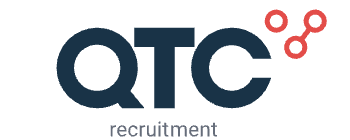Geschreven door Rinesa - 5 Minuten leestijd
How employers can boost workplace goals using AI

In today’s rapidly changing business landscape, many organisations are turning to workforce AI to improve their operations and increase efficiency. One area where AI has shown great promise is in boosting workplace goals.
In this article, we will explore how employers can leverage AI to enhance workplace productivity and achieve their goals.
Key components of AI usage in the workplace
1. Future of work trends
One of the key trends in the future of work 2023 is the use of AI to augment the workforce. This involves using AI-powered tools and technologies to automate routine tasks, freeing up employees to focus on more complex and strategic work. Augmented workforce automation can increase productivity and efficiency while also improving the quality of work and customer satisfaction. Another future of work trend is the use of predictive analytics to make data-driven decisions.
2. Workforce AI
Workforce AI is another key trend in the future of work 2023. It involves the use of AI-powered tools and technologies to improve talent management, recruitment, and employee engagement. By leveraging the power of AI, employers can identify top candidates for open positions, personalise training programs for individual employees, and predict employee turnover.
3. AI transforming business
AI is also transforming business in other ways. For example, AI-powered chatbots and virtual assistants can improve customer service and reduce the workload on customer service teams. AI-powered systems can also analyse data to identify potential cost savings and revenue opportunities, leading to increased profitability and better business outcomes.
4. Augmented workforce and human-robot collaboration
Augmented workforces and human-robot collaboration are other ways that AI is transforming the workplace. It involves using AI to enhance employee productivity, efficiency, and performance. This can include personalised training programs, virtual assistants, and predictive analytics to identify areas for improvement.
How artificial intelligence could improve workplace operations
As we move into the future of work 2023, there is no doubt that AI will continue to play an increasingly important role in shaping the workplace. From workforce AI to augmented workforce automation and human-robot collaboration, AI has the potential to transform business and help employers achieve their goals more effectively. Here’s how:
Automating Routine Tasks: One way that employers can reach business goals is by automating routine tasks. This frees up employees to focus on more complex and strategic work, which can lead to increased productivity and better outcomes. AI-powered automation can also reduce errors and improve the accuracy of routine tasks, which can improve the quality of work and increase customer satisfaction.
Predictive Analytics: Another way that employers can use AI to achieve workplace goals is through predictive analytics. Predictive analytics is the use of data, statistical algorithms, and machine learning techniques to identify the likelihood of future outcomes based on historical data. Employers can use predictive analytics to forecast trends, identify potential problems, and make more informed decisions. By using predictive analytics, employers can make data-driven decisions that can help them achieve their goals more effectively.
Virtual Assistants: Virtual assistants are another way that employers can use AI to meet workplace goals. Virtual assistants can perform a range of tasks, including scheduling meetings, sending reminders, and answering common questions. By delegating these routine tasks to virtual assistants, employees can focus on more complex work that requires their expertise. This can lead to increased productivity, improved job satisfaction, and better outcomes for the organisation.
Employee Training and Development: Workforce AI can also be used to reach workplace goals by enhancing employee training and development. AI-powered learning systems can personalise training programs for individual employees based on their learning styles, strengths, and weaknesses. This can help employees learn more effectively and efficiently, leading to better performance and increased productivity. AI can also be used to identify areas where employees need additional training or development, allowing employers to tailor training programs to the specific needs of their workforce.
Improved Recruitment and Retention: Employers can also use AI to boost workplace goals by improving recruitment and retention. AI-powered recruitment tools can analyse resumes, cover letters, and social media profiles to identify top candidates for open positions. This can reduce the time and resources required for recruitment and improve the quality of hires. AI can also be used to identify employees who are at risk of leaving the organisation, allowing employers to take proactive steps to retain top talent.
Challenges of AI in the workplace
While AI has the potential to boost workplace goals, there are also challenges to consider. One of the biggest challenges is the need for employees to adapt to new technologies and workflows. This can require significant training and support, and some employees may resist the changes. Additionally, there are concerns around privacy and data security that must be addressed to ensure that AI is used ethically and responsibly.
Looking ahead to the future of work trends in 2023, we can expect to see continued growth in the use of AI to augment the workforce and transform business. As AI technologies become more advanced and accessible, more organizations will be able to leverage their benefits to achieve their goals more effectively. We can also expect to see continued growth in the use of predictive analytics, AI-powered chatbots, and other AI-powered tools and technologies.
Conclusion
Workforce AI has the potential to be a powerful tool for employers looking to boost workplace goals. However, the implementation of AI in the workplace must be done thoughtfully and responsibly, taking into account the challenges and risks associated with these technologies. By leveraging the benefits of AI while addressing these challenges, employers can build a more productive and successful workforce.
There is no doubt that the implementation of Artificial Intelligence in the workplace is a powerful method to boost workplace goals. However, certain tasks and responsibilities still require human labour. If you are currently seeking talented professionals to contribute to your Life Science organisation, let experts at QTC Recruitment help you find the right talent. Check out how you can be helped here.
Also published on Thehrdigest.com
Want to stay informed about current Life Science and recruitment news on a regular base? Then register here for free.
